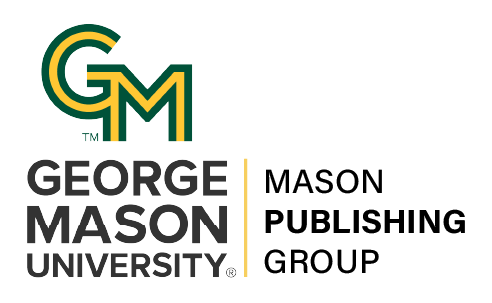The George Mason University Press supports Mason’s academic mission by publishing peer-reviewed, scholarly works, written by authors from a wide range of perspectives for a diverse readership. Mason Publishing also publishes less formal, non-peer reviewed works scholarly works such as workbooks, teaching guides, and other titles that serve the Northern Virginia or DC area community through the 123 Press imprint.
123 Press Submissions
123 Press primarily publishes faculty members, students and other members of George Mason University, as well community members of the Fairfax and Northern Virginia region. The less formal imprint requires less formal submission proposals. However, we encourage authors with projects for either imprint to consult the general information on book proposals below. Well-developed proposals give provide a much better picture not only of what the book is about, but where the book fits in the field, the author’s goals for publication and fit with the imprint.
George Mason University Press Submissions
Of the list below for a full proposal, the minimum requirements for a proposal to the George Mason University Press include:
- A synopsis or summary.
- A sample chapter.
- Author CV.
Additional proposal elements are encouraged; proposals without the above will not be reviewed.
Book proposals for either imprint should be submitted with attachments by email to publish @ gmu dot edu.
Your book proposal does not necessarily need to follow the guidelines, but these are provided to let you know the aspects that a thorough, well-thought out proposal will frequently include.
Book Proposal Basics
Proposals are straightforward—every proposal should have an overview, competition, market, author, table of contents, and sample chapter. What makes your book unique and compelling? Why are you uniquely positioned to write this book? Who will read (and in particular buy) your book? Why are you submitting a proposal to this particular publisher? A full proposal can be 30-40 pages (but is summarized in the 1- or 2-page synopsis) not including sample chapter(s).
Book Proposal Outline
Specific order of components is not as important as including—for most projects—all or most the elements below.
-
Title page
- Title of Book
- Author
- Contact info
- Table of contents (TOC for the proposal itself, not the book)
-
Overview/summary: Concise, one- to three-page description of the manuscript, including:
- The argument of your book and what makes it distinctive
- Discipline(s)
- Is it written in a way that people from diverse fields will be able to appreciate?
- Audience /Level of readership
- (beyond an audience is “the general reader” or “educated layperson” which is generally not accurate in most cases)
- What academic courses might use the book? Have you used the material in a course that you teach?
- Author information: one to two pages—include details of your professional standing, previous books, and other relevant publications. Include significant press coverage (especially major media- print, radio, TV). Not your curriculum vitae, though you should include that at the end of the proposal, as an appendix, with sample chapter(s).
- Competing works: Compare/contrast your project with competing works. One-three pages, depending on amount and significance of competition.
-
Marketing ideas (optional but often helpful):
- What kinds of things are you prepared to do to market your book?
- What have you already done to market yourself as an author/scholar?
- What conferences should the book be exhibited at? What associations/membership organizations do you belong to? Do they have listservs, mailing lists, etc? Who should be approached for blurbs? Where should review copies be sent?
- Do you have experience on radio/tv? Print?
- Social media experience/expertise. Include your website, twitter, other social media presence of a professional nature.
- Chapter outline/Table of contents, with (for each chapter) details of contents and length. Include total projected length.
-
Description of any special or unusual features:
- For example, number and type of illustrations, photographs, tables, maps, glossary, appendices
- Multimedia: Will project have multimedia (Audio, Video, Interactive elements)
- Other aspects that reveal different, original, or interesting aspects of your project.
-
Delivery information:
- Sample chapters or whole manuscript available for review
- Projected completion date (or is the book finished?)
- Suggested readers/peer reviewers, including those who might have already read the manuscript. (We may not use these suggestions, but showing that you know the experts in the field will not hurt).
-
Sample chapters
- Not necessarily the first chapter; it should be the best you've got.
- For example, introduction, chapter one, conclusion (if possible).
-
Manuscripts from dissertations:
- If the proposed book is based on a dissertation, it’s crucial that you describe how you are revising the thesis.
- Indicate whether any of the material in the manuscript has been presented earlier (paper presented at a scholarly conference, or a thesis / dissertation)
